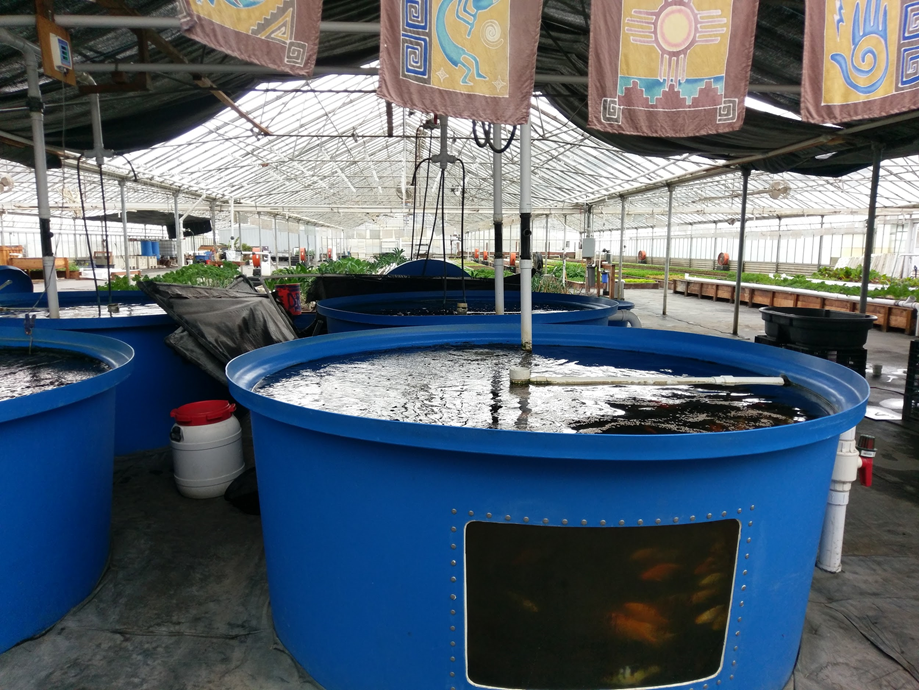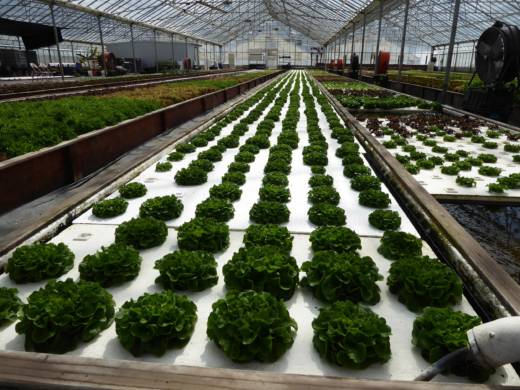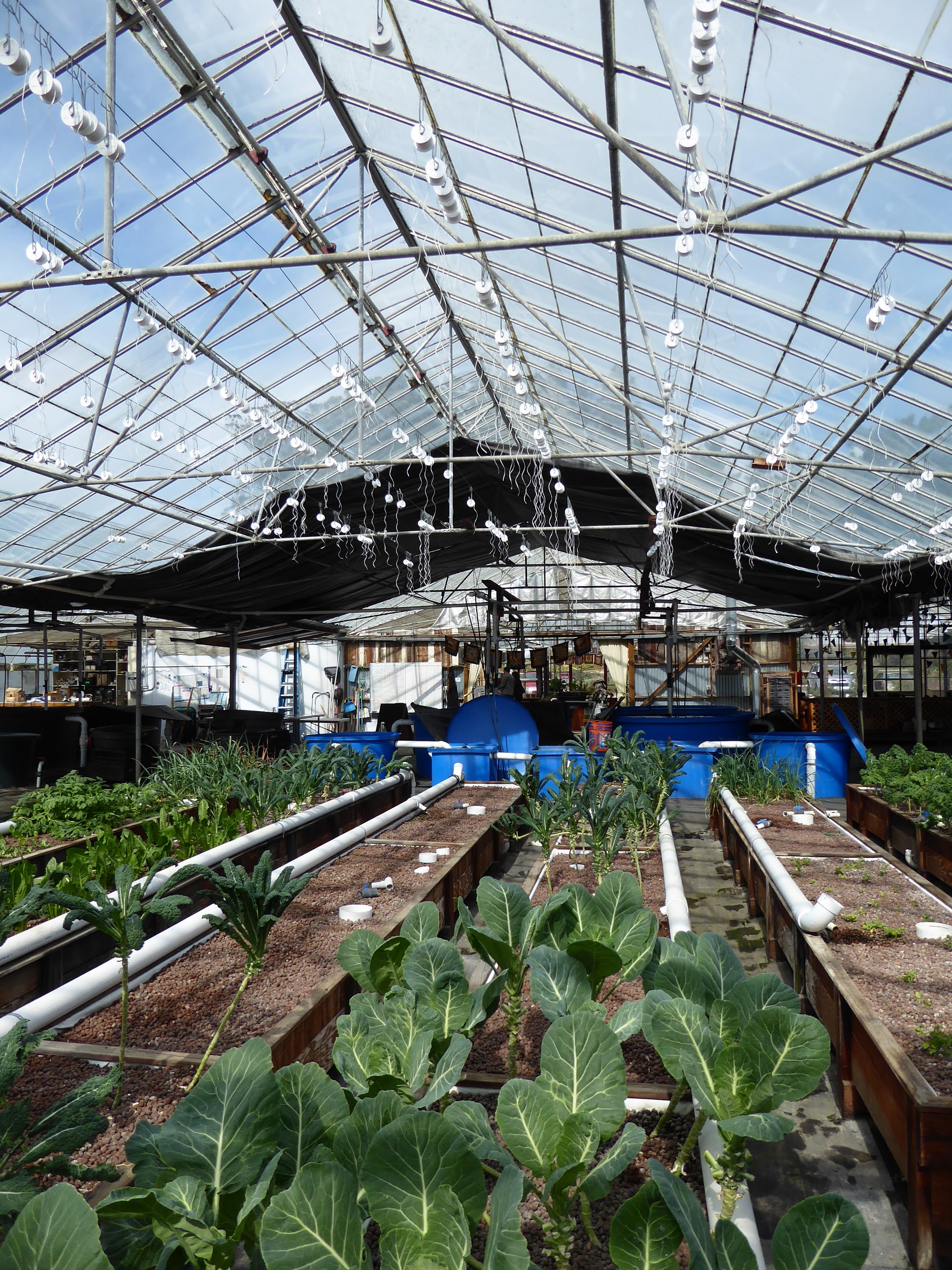Editor’s Note: The following story was produced for Youth Takeover week at KQED.
Most farms grow food with soil and water. But at Ouroboros Farm in Half Moon Bay, Ken Armstrong grows food with water and fish.
Inside a building about the size of a professional basketball court, water pours from a pipe into huge tubs where goldfish, catfish and tilapia are swimming. Then a complex pipe system takes water from the tubs to feed rows of lettuce, cabbage, and kale, floating on large platforms over water beds. What we’re looking at is called “aquaponics.”
“More and more people are looking for sustainable solutions to our agricultural needs in the future,” Armstrong says, “and aquaponics is one of those solutions.”
Farming with aquaponics means balancing three ecosystems: fish, plants and bacteria. The system is a loop that circulates the same water over and over from fish to plants to fish to plants. The job of the fish is just to eat and poop. Bacteria turn the fish poop into nitrates for plants. As the plants take in nourishment, they filter the water and clean it. The clean water goes back to the fish tanks.

“Pretty much the only utilization of water in an aquaponics system is through transpiration,” Armstrong says, “what the plants actually utilize, and very little is lost to evaporation, which is the case in most soil-based agriculture.”

